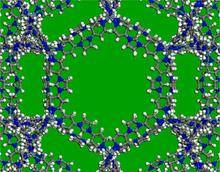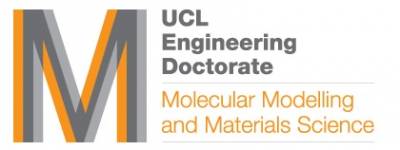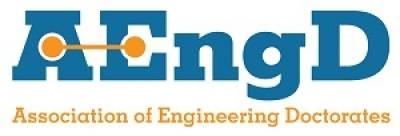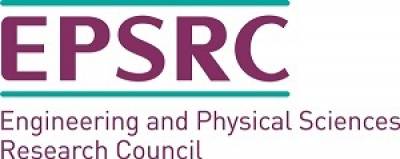Our Vision

The M3S CDT is a partnership between University College London (UCL) and a range of external sponsors.
The unique features of the M3S programme are:
- Technical lectures and training by academic and industrial scientists;
- Accredited project management and business courses;
- Materials simulation projects;
- Professional career development and transferable skills training;
- Knowledge transfer and outreach activities;
- Substantially greater range of industrial collaborators in new priority research areas.
Key Information:
- A*STAR Programme
Currently, the M3S CDT runs one international collaborative research programme, namely the A*STAR programme.
A*STAR programme
The A*STAR programme is a Collaborative Research Programme between MAPS Faculty of UCL and Agency for Science, Technology and Research (A*STAR) of Singapore, which was establish in 2012. So far, the CDT has 29 students on the programme.This is a 3-year PhD programme co-funded by MAPS UCL and A*STAR, Singapore. The projects are collaborations between UCL and A*STAR academics. The students will spend first year of their PhD in UCL for doing research and training. During second and third year of their study, the students will conduct research in A*STAR of Singapore and the students will return to UCL for final six months to complete their thesis. Stipend will be paid during the last six months .
If you are interested in the programme as a student or an academic of MAPS UCL, please email Dr Zhimei Du
- Message to Prospective Industrial Partners
Why should your company sponsor the research projects in M3S CDT?
Firstly, the project idea comes from you! It is developed with a UCL academic, who will act as the academic supervisor. You will also need to nominate an industrial supervisor who will be actively involved in the research progress and student recruitment.
Secondly, for each project, we will contribute more than 60% of the costs, which will effectively invest in your company’s research and development.
Besides this, you can nominate your current staff to enrol in the programme. This enables you to raise the intellectual capital of your company and contribute to your employee’s career development. The close relationship you will develop with the University will offer you access to great intellectual capital and counsel. Publications and conference presentations arising from the research will greatly increase public and industry recognition of your company’s innovation.
The student will carry out their research at UCL or on-site with you, or at both venues according to the agreement. This will offer you an outstanding opportunity for partnership with academia and the best emerging scientific minds.What is the cost for each sponsorship?
You are asked to contribute a tax deductible £32,000 (minimum) over 3 years. The funding will contribute to the CDT scholarship fund; other costing for carrying out the research, e.g. travel expenses, equipment etc.
If you are interested in becoming a sponsor, please get in touch with us by emailing Dr Zhimei Du (z.du@ucl.ac.uk)
We will help you to set up a project, which will benefit your company's interest and find you a potential academic partner..
- Message to Prospective Academic Partners
How to get involved in M3S programme as an academic?
- Find a company with whom you would like to develop a project proposal.
- Develop your research ideas with the company into a project proposal.
- Secure the sponsorship from your industrial partner.
- Submit the proposal to the Manager of the M3S CDT (Dr Zhimei Du) for an approval.
- Once your proposal has been approved, you can start the recruitment process. At this stage, the Centre Director as well as the Manager will give you a hand if needed.
- Start the project!
- Our Industry Partners




























Sponsors of the M3S CDT span a wide range of industrial interests, from energy providers and catalyst specialists to glass manufacturers, computer hardware and software companies, biomedical implants and national laboratories from UK, USA and France.
In terms of the size, both small and medium enterprises and multi-national corporations have been involved in the research activities in the M3S CDT.
There are 60 external sponsors associated with the CDT.
List of the sponsors and the projects follows:
- Computational studies of III-V nitrides
- Advanced electronic and quantum properties of oxides and oxide interfaces
- Tuning electronic properties of thin films and interfaces using defects
- A computational study of silica
- Stain resistant paints
- Low power metal oxide-based gas sensors fabricated by vapour deposition
- Easy-to-clean antimicrobial superhydrophobic coatings
AWE (The Atomic Weapons Establishment)
- Electronic and structural response of bulk and particulate topaz to ratio.
- Computer modelling of inorganic polymer materials
- Helium bubble nucleation, growth and subsequent effects on the physiochemical properties of palladium tritide
- Modelling of the hyperstoichiometric UO3, U3O8 and U4O9 phases
- Melting curves of alkali metals from first principles calculations
- Computer modelling of hydrogenation reactions in the organic solid state
- Developing a mechanistic understanding of hydrogens with plutonium oxide surfaces
- Forcefield Development and Polymorphism Prediction for Energetic Molecules
- Determination of the dominant degradation mechanisms in plasticised nitrocellulose
- Emulsion droplet templates for funtional percolating structures in films
- The mechanics of polarised epithelium.
- Resonant cantilever sensing: From model systems to biomedical applications.
Cambridge Crystallographic Data Centre
- Generation and analysis of organic crystal energy landscapes.
- Next Generation Nanomaterials for Energy Storage Devices
- Integrated microfluidic E-SERS platform for biosensing
- Nanostructured hydrogen storage materials (4 projects).
- New materials for bone implants.
- CVD of thin films on steel.
- A High Pressure Flow Reactor for the Operando Surface X-ray Scattering Analysis
- Functional surfaces and coatings for Domestic Applications
- Novel X-ray techniques for illuminating modes of deactivation in Fischer-Tropsch catalysts
- Bimetallic nanoalloys for CO2 reduction
- Bio-inspired (Fe,Ni)S Nano-catalysts for CO2 Conversion
- Experimental Determination of the structure of light harvesting metal oxide interfaces with water
- Ionic Liquid Lubricants
- Synthesis and Surface Characterisations of Novel 2D Layered Materials
European Office of Aerospace Research & Development
- Modelling structural modifications by electronic excitations in band gap materials
- The effect of organic structure directing agents in zeolite synthesis
- Denture Cleaning Tablets – Reactive Oxygen Chemistry, Formulation and Antimicrobial Effects
- Computational studies of transition metal hydride hydrogen storage materials
- Investigating molecular interactions in high performance oil additives.
- Modelling of point defects at wide-gap semiconductor interfaces with gate dielectrics
- Modelling defects in SiC
- Molecular dynamics simulations of interface structure of Cu/TiW systems
- The enrichment of adult stem cell populations for osteogenic capacity.
- In situ studies of catalytic materials using synchrotron radiation techniques
- Oxidative and reductive properties of rare-earth metal oxides, CO oxidation and NO reduction: can we find an alternative to CeO2?
- The modelling of new catalysts for fuel cell applications
- A computational modelling study of hydrocarbon activation on oxide catalysts
- Predictive modelling of functional materials
- Understanding structure evolution in supported metal nanparticles used in emission control; tanslating observations made on model catalysts to real world applications
- Modelling the chemistry of plutonium oxide surfaces.
- Advancing solvent extraction technology for improved management of contaminated liquids.
- Real-time AFM imaging of biomolecules.
- Modelling nano-ferroelectrics.
- A novel approach against catheter-related infections
- Transparent conductive flame coatings on glass
- Modelling the structure and rheology of a global chassis platform for hair colorants.
Pacific Northwest National Laboratory
- Directing Crystal Growth with Functional Surgaces
- Laser-materials interactions
- Modelling electron sollision and surface reactions in technological plasma
- Nanotechnology for quantum current standards.
- Superconducting Nanowires.
- Anti-friction coatings
- Reactions of ceria surfaces
- Nanoparticle- polymer composite films.
- Predicting the materials properties of layered-material polymer composites
Science & Technology Facilities Council, UK (STFC)
- Hybrid quantum mechanical/molecular mechanical studies of active sites in solids and on their surfaces.
- Nanostructured hydrogen storage materials.
- Modelling defects at semiconductor-oxide interfaces.
- Defect properties at interfaces in microelectronic devices
- Next generation metal oxide sensors for environmental monitoring.
- The enrichment of adult stem cell populations for osteogenic capacity.
- End point detection for deep reactive ion etching of silicon.
- Multiple Analytical Measurements to Determine Surface properties
The European Synchrotron Radiation Facility (ESRF)
- Bio-inspired (Fe,Ni)S Nano-catalysts for CO2 Conversion.
- Adsoebates on metal oxide surfaces.
- Understanding the chemistry involved in the chloride process for making titanium dioxide pigment
- Photoemission and Inverse Photoemission Spectroscopy for Electronic Structure Determination of Functional Materials
- Nanoceramic functional coatings.
- Modelling radiation damage in insulating materials.
- Polymersomes for lung delivery
WIP-AIMR (Japan)
- Computational modelling of electronic and magnetic properties of two- and one-dimensional electron gas in oxide hetrostructures.
 Close
Close





